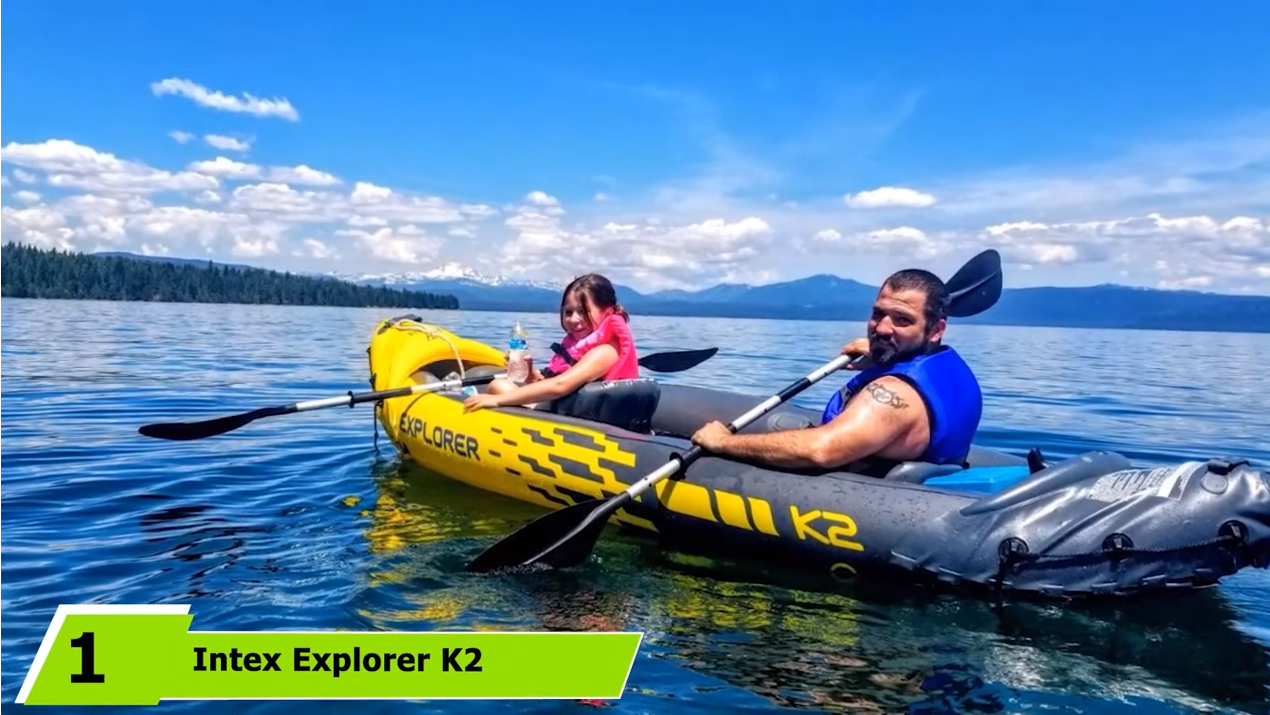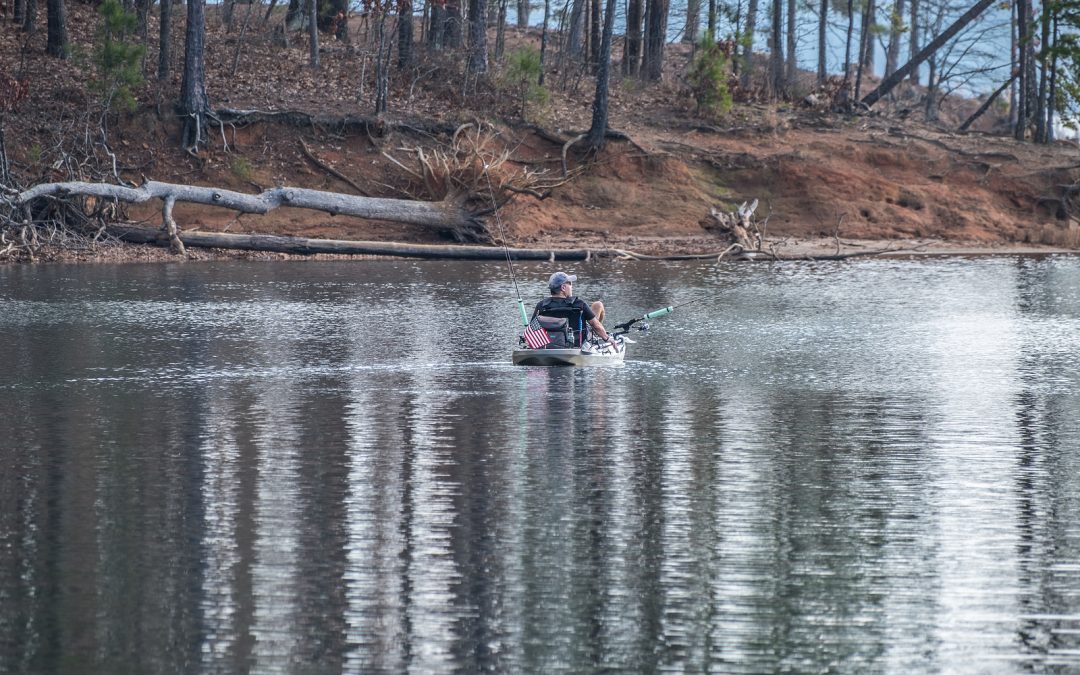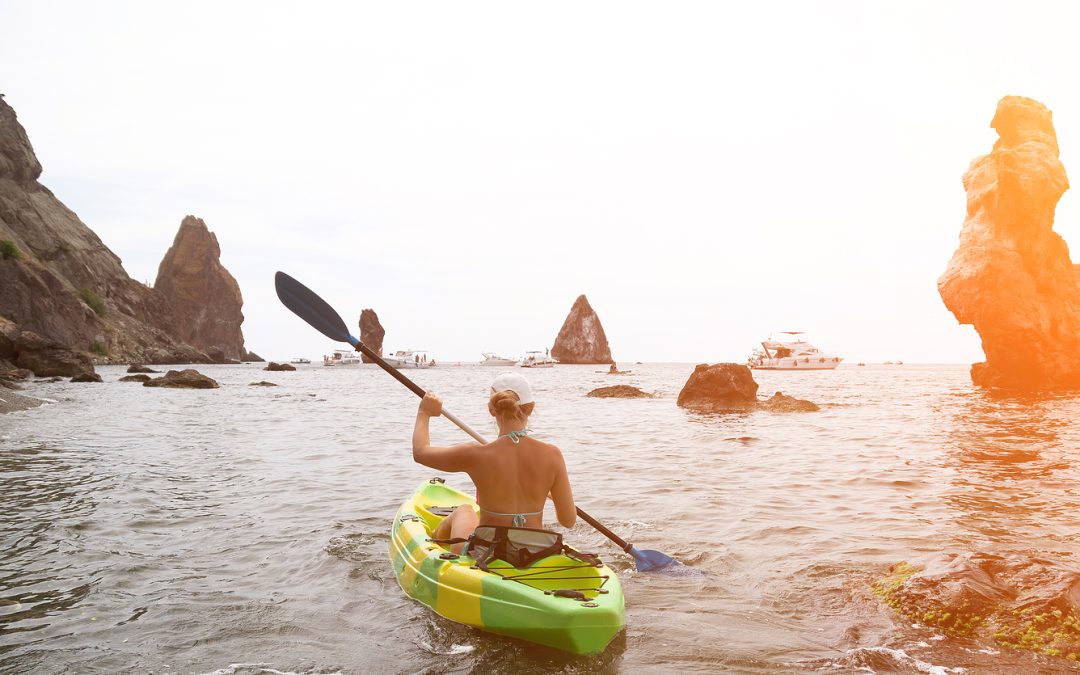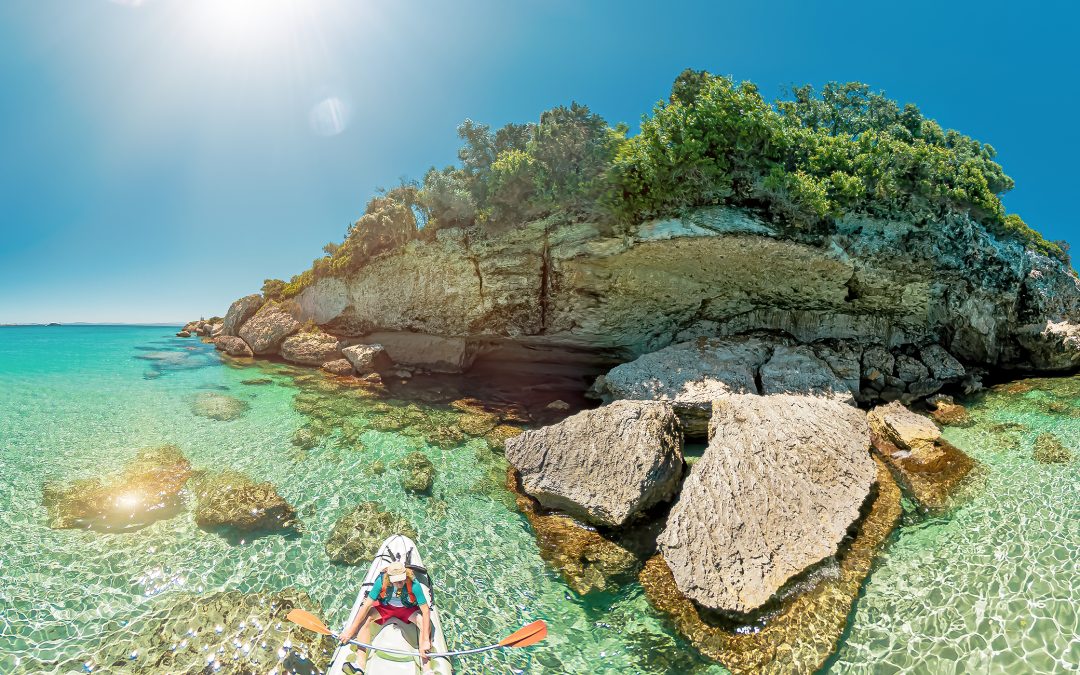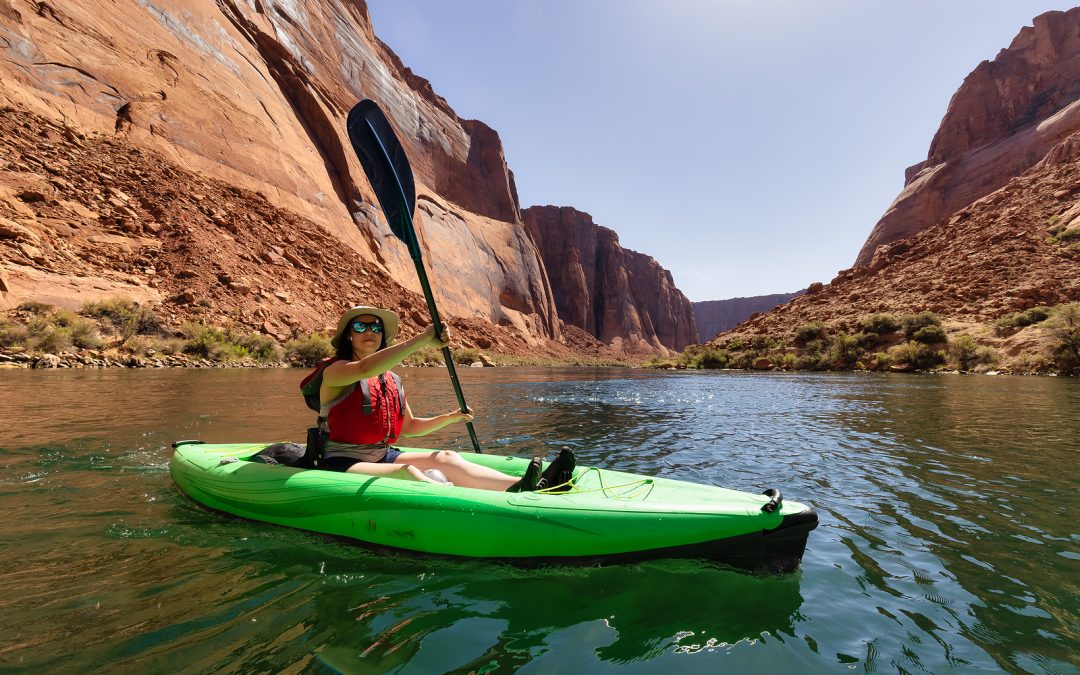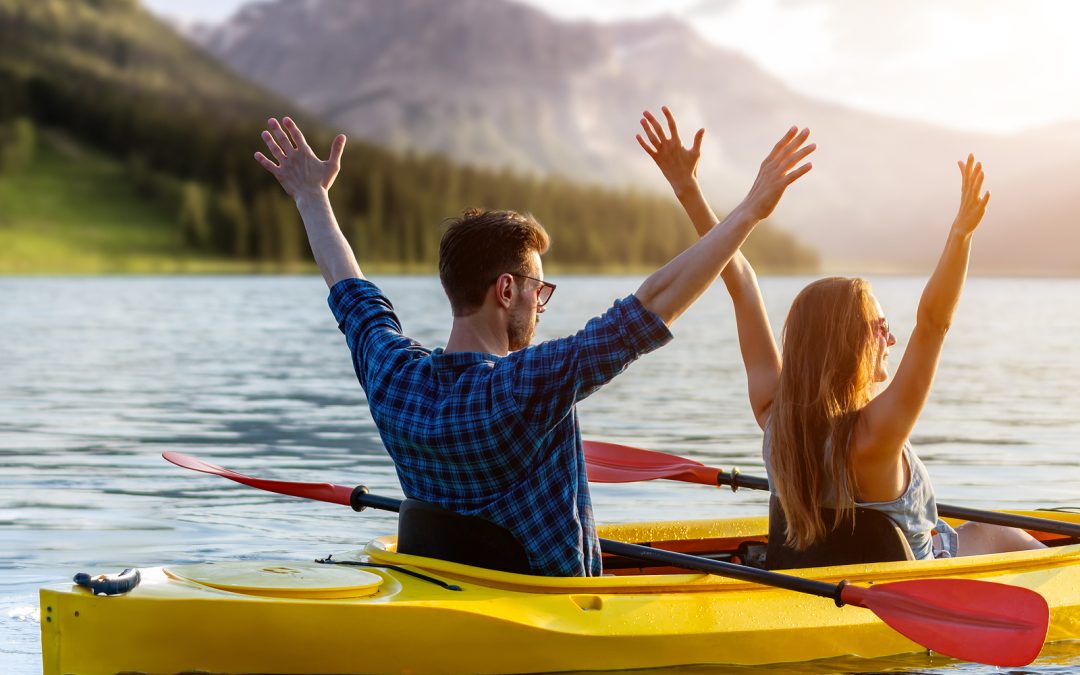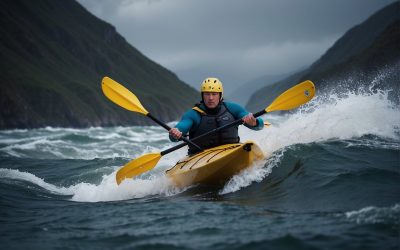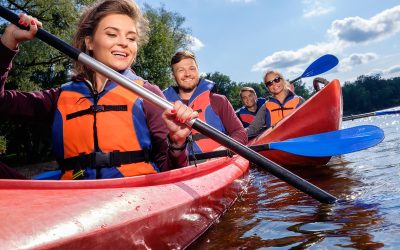Picking the right kayak as a beginner can be tricky. There are many options to choose from, each with its own pros and cons.
The best kayak for new paddlers depends on how and where you plan to use it.

For most beginners, a sit-on-top recreational kayak is a great choice. These kayaks are stable, easy to get in and out of, and suitable for calm waters like lakes and slow-moving rivers.
They’re also versatile enough for different types of paddling.
When shopping for your first kayak, think about factors like your body size, budget, and where you’ll be using it most often. Trying out a few different models can help you find the perfect fit.
With the right kayak, you’ll be set for many fun adventures on the water.
Key Takeaways
- Sit-on-top recreational kayaks are often best for beginners
- Consider your size, budget, and paddling location when choosing
- Try different kayaks before buying to find the right fit
Understanding Kayaking Basics

Kayaking is a fun water sport that’s easy to learn. Beginners should know about kayak types, parts, and basic paddling moves. This helps new kayakers stay safe and have more fun on the water.
Types of Kayaks
Sit-on-top kayaks are great for beginners. They’re stable and easy to get in and out of. You might get wet, but that’s okay on hot days.
Sit-inside kayaks keep you drier. They’re good for cooler weather. These kayaks can be harder to exit if you tip over.
Recreational kayaks are wide and stable. They work well on calm lakes and slow rivers.
Touring kayaks are longer and faster. They’re better for longer trips or rougher water.
Inflatable kayaks are easy to store and move. They’re not as fast as hard kayaks, but they’re fun for casual paddling.
Kayak Anatomy
The front of a kayak is called the bow. The back is the stern.
The cockpit is where you sit. It has a seat and sometimes foot pegs.
The hull is the bottom of the kayak. Its shape affects how the kayak moves in water.
Deck lines are ropes on top of the kayak. They help you hold on if you flip over.
A paddle blade can fit under the deck line. This helps when you’re getting in the kayak.
Some kayaks have a rudder or skeg. These help steer in wind or currents.
Paddling Techniques
The basic kayak stroke is the forward stroke. Put the paddle in the water near your feet and pull back.
To turn, use a sweep stroke. Make a wide arc with your paddle from the front to the back of the kayak.
The draw stroke moves your kayak sideways. Put the paddle in the water next to the kayak and pull it toward you.
To stop, use a reverse stroke. It’s like the forward stroke, but backwards.
Good posture helps you paddle better. Sit up straight with your feet on the foot pegs.
Practice these moves in calm water before going on bigger adventures.
Choosing the Right Kayak
Picking the perfect kayak involves considering key factors like style, size, weight, and materials. These elements impact comfort, performance, and ease of use for beginners.
Sit-On-Top vs. Sit-In Kayaks
Sit-on-top kayaks offer easy entry and exit. They’re stable and good for warm climates. Recreational sit-on-top kayaks are often wide and very stable.
Sit-in kayaks provide better protection from water and wind. They’re suitable for cooler conditions. These kayaks come in more varied shapes and sizes.
For beginners, sit-on-top kayaks are often recommended. They’re less confining and easier to get back on if you fall off.
Length and Width Considerations
Kayak length affects speed and tracking. Longer kayaks go faster and straighter. Shorter kayaks turn more easily.
Width impacts stability. Wider kayaks feel more stable but move slower. Narrow kayaks are faster but less stable.
For beginners, a kayak between 9 and 11 feet long is a good choice. It balances stability and maneuverability. Look for widths around 28-32 inches for good stability.
Kayak Weight and Portability
Lighter kayaks are easier to carry and transport. They’re good for solo paddlers. Heavier kayaks can be more durable but harder to move.
Inflatable kayaks are very portable. They’re light and pack small. Hard-shell kayaks are more durable but take up more space.
Consider how you’ll transport your kayak. If you can’t lift heavy items, look for kayaks under 50 pounds. Inflatable options like the Intex Challenger K1 are great for easy storage and transport.
Material Choices
Plastic kayaks are tough and affordable. They can take bumps and scrapes. Polyethylene is common and durable but can warp in heat.
Fiberglass kayaks are lighter and faster. They’re more expensive and can crack on impact.
Inflatable kayaks use tough fabrics like PVC. They’re light and portable but can puncture.
For beginners, plastic kayaks are a good choice. They’re durable and cost-effective. The Old Town Malibu 9.5 is a popular plastic option for new paddlers.
Key Features for Beginners
When choosing a kayak as a beginner, certain features are crucial for a safe and enjoyable experience. These include stability, comfort, and storage space. Let’s look at each in detail.
Stability and Tracking
Stability is key for new kayakers. Wide, flat-bottomed kayaks offer the most stability. They help prevent tipping and build confidence on the water.
Tracking refers to how straight a kayak moves. Good tracking makes paddling easier and more efficient. Longer kayaks usually track better than shorter ones.
Some kayaks have a keel, a fin-like projection on the bottom. This helps with tracking and stability. For beginners, a kayak with a slight rocker (curved hull) can be helpful. It makes turning easier.
Comfort and Adjustability
Comfort is crucial for long paddling sessions. Look for kayaks with padded seats and backrests. Adjustable seats allow for better posture and reduce fatigue.
Footrests are another important feature. They should be adjustable to fit different leg lengths. This helps maintain proper paddling form.
Cockpit size matters too. A larger cockpit makes getting in and out easier. It’s especially helpful for beginners who might feel claustrophobic in a tight space.
Weight capacity is also important. Choose a kayak that can comfortably support your weight plus gear.
Storage Space and Capacity
Even as a beginner, having storage space is important. Dry hatches keep items like phones and keys safe from water. Bungee cords on the deck allow for easy access to items like water bottles.
Consider how you’ll use the kayak. Day trips require less storage than overnight adventures. Some kayaks have removable storage compartments for flexibility.
Remember to factor in the kayak’s weight capacity. It should support you plus your gear comfortably. Overloading can affect performance and safety.
For fishing enthusiasts, look for kayaks with rod holders and tackle storage options. These features make it easier to enjoy your hobby while paddling.
Safety First

Proper safety gear and knowledge are essential for kayaking. Two key areas to focus on are personal flotation devices and additional safety accessories.
Personal Flotation Devices (PFDs)
PFDs are crucial for kayak safety. Always wear a Coast Guard-approved life jacket when kayaking. Choose a PFD that fits snugly but allows for comfortable movement.
Look for kayak-specific PFDs with high backs to accommodate kayak seats. Bright colors increase visibility on the water.
Check the PFD’s buoyancy rating. Adults typically need 15.5 to 22 pounds of buoyancy. Ensure all straps and buckles are secure before launching.
Replace PFDs if they show signs of wear or damage. Inspect them before each trip.
Safety Gear and Accessories
Carry a whistle and learn proper safety signals for communication on the water. A waterproof flashlight is important for low-light conditions.
Pack a basic first aid kit in a waterproof container. Include items like bandages, antiseptic wipes, and pain relievers.
Bring a bilge pump to remove water from the kayak if needed. A paddle float can help with self-rescue in case of capsizing.
Carry a multi-tool and duct tape for quick repairs. A throw bag with rope is useful for assisting others in emergencies.
Consider taking a kayak safety course to learn rescue techniques and improve paddling skills.
Maintaining Your Kayak

Keeping your kayak in good condition is key to enjoying it for years to come. Regular care helps prevent damage and ensures your kayak is ready for your next adventure.
Routine Cleaning
Clean your kayak after each use to remove dirt, salt, and debris. Use mild soap and water to wash the hull and deck. Rinse thoroughly with fresh water. Dry the kayak with a soft cloth to prevent water spots.
Pay extra attention to moving parts like foot pegs and seat adjustments. Clean these areas to keep them working smoothly. Don’t forget to clean your paddle too.
For inflatable kayaks, make sure they’re completely dry before storage. This prevents mold and mildew growth.
Storage and Protection
Store your kayak in a cool, dry place away from direct sunlight. UV rays can damage the kayak’s material over time.
Keep the kayak off the ground using a kayak rack or padded sawhorses. This prevents warping and protects against scratches.
If storing outside, use a kayak cover to shield it from the elements. Make sure the cover is waterproof and UV-resistant.
For long-term storage, loosen any straps or tie-downs to prevent stress on the hull.
Simple Repairs
Check your kayak regularly for small cracks or holes. Fix these promptly to prevent further damage.
For plastic kayaks, use a plastic weld kit for repairs. Clean the damaged area, apply the welding material, and smooth it out.
Patch small holes in inflatable kayaks with a repair kit made for the kayak’s material. Clean the area, apply the patch, and let it dry completely.
Keep a multi-tool and duct tape handy for quick fixes on the water. These can temporarily repair broken paddles or patch small leaks.
Getting Started
Starting your kayaking journey requires learning key skills and techniques. These basics will help you launch safely and paddle effectively on the water.
Launching Your Kayak
To launch your kayak, find a calm, shallow area near the shore. Place the kayak parallel to the water’s edge.
Enter from the side, keeping your weight low and centered. Sit down carefully and adjust your position.
For deeper water launches, use a dock or pier. Lower the kayak into the water first.
Sit on the edge with your legs inside, then smoothly slide into the seat.
Always wear a properly fitting life jacket before launching.
Check weather conditions and water temperature. Bring essential safety gear like a whistle and waterproof flashlight.
Basic Paddling Strokes
Master these fundamental strokes to control your kayak:
- Forward Stroke: The main stroke for moving ahead. Dip the paddle blade fully in the water near your feet.Pull it back alongside the kayak, stopping at your hip.
- Reverse Stroke: To move backward, do the opposite of the forward stroke. Start at your hip and push the blade toward your feet.
- Sweep Stroke: For turning, reach out to the side and make a wide arc with the paddle from front to back.
- Draw Stroke: To move sideways, reach out and pull the water toward you.
Practice these strokes in calm waters. Keep your arms straight and use your torso to power the movements.
With time, you’ll gain confidence and skill on the water.
Where to Kayak

Beginners should choose their kayaking locations carefully. Some spots offer calm waters and easy navigation, while others present more challenges. Safety and skill level are key factors to consider when picking a place to paddle.
Lakes and Rivers for Beginners
Lakes are great starting points for new kayakers. They often have calm waters and fewer hazards.
Look for small lakes with little boat traffic. Many state parks offer ideal conditions for learning.
Rivers can be fun too, but pick wisely. Slow-moving rivers with few rapids are best for beginners.
Class I rapids are okay for those with some experience. Always check water levels and weather before heading out.
Local kayaking clubs often know the best spots. They may offer guided trips for newcomers.
This can be a safe way to explore new areas.
Coastal Waters and Their Challenges
Coastal kayaking can be exciting but risky for beginners. Tides, waves, and currents add complexity.
Start in sheltered bays or estuaries where waters are calmer.
Always check tide charts and weather forecasts. Wind can change quickly on open water.
Stick close to shore and avoid areas with heavy boat traffic.
Kayaking in the ocean requires more skills and safety gear. Take a coastal kayaking course before venturing out.
Learn about local marine life and potential hazards.
Remember to always wear a life jacket. Bring a whistle and tell someone your plans.
With proper precautions, coastal kayaking can be a rewarding experience.
Advancing Your Skills

As you become more comfortable in your kayak, you’ll want to take on new challenges. Building your skills opens up exciting opportunities to explore different waters and connect with other paddlers.
Progressing to Intermediate Waters
Start by practicing in slightly choppy conditions or gentle currents.
Focus on mastering your forward stroke and turning techniques. Try edging your kayak to improve stability and maneuverability.
Work on reading water patterns and understanding how currents affect your boat.
Practice ferrying across currents and entering/exiting eddies safely.
Gradually increase the difficulty of your paddling locations as your skills improve.
Always go with a more experienced buddy when trying new waters. Wear proper safety gear and carry essential equipment like a bilge pump and paddle float.
Enrolling in Kayaking Courses
Taking a kayaking course can significantly boost your skills and confidence. Look for classes offered by local paddling clubs, outdoor retailers, or certified instructors.
Courses typically cover topics like:
- Proper paddling technique
- Rescue skills and self-recovery
- Navigation and trip planning
- Reading water and weather conditions
Many courses offer on-water practice sessions to reinforce classroom learning.
Consider getting ACA (American Canoe Association) certified as you progress.
This certification demonstrates your skills and can open up opportunities to lead trips or teach others.
Joining a Kayaking Community
Connecting with other kayakers accelerates learning and makes paddling more fun. Join a local kayaking club or group to meet like-minded enthusiasts.
Many clubs organize regular outings, skills clinics, and social events.
Attend kayaking festivals or symposiums to try new boats and gear. These events often feature workshops led by expert paddlers.
Volunteer for river or beach cleanups to give back to the paddling community. This is a great way to meet other kayakers and learn about local waterways.
Consider mentoring beginners once you’ve gained experience. Teaching others reinforces your own skills and knowledge.
Choosing Kayaking Apparel
Proper clothing is vital for a safe and enjoyable kayaking experience. The right apparel protects you from the elements and helps regulate body temperature on the water.
Clothing for Different Weather Conditions
In warm weather, wear lightweight, quick-drying materials. Sit-on-top kayaks are popular for beginners and may get you wet, so swim shorts or a bathing suit work well. A rashguard or lightweight long-sleeve shirt offers sun protection.
For cooler conditions, layering is key.
Start with a moisture-wicking base layer. Add an insulating middle layer like fleece. Top it off with a waterproof, breathable outer shell.
Always pack extra clothes in a dry bag. Even on warm days, the wind can make paddlers cold when wet.
Footwear is important too. Water shoes or sandals with heel straps protect feet and provide grip on slippery surfaces.
Don’t forget sun protection. Wear a hat, sunglasses, and apply waterproof sunscreen to exposed skin.
Final Thoughts

Choosing the right kayak as a beginner is crucial for a positive experience on the water. A good starter kayak should be stable, easy to maneuver, and comfortable.
Sit-on-top kayaks are often recommended for new paddlers. They’re easier to get in and out of and less likely to flip. The Pelican Argo 100X EXO is a popular and affordable option in this category.
For those interested in tandem kayaking, the Perception Rambler 13.5 offers a stable platform for two paddlers at a reasonable price point.
Weight and portability are important factors to consider. Lighter kayaks are easier to transport and launch, which can be especially helpful for beginners.
Budget-conscious paddlers might want to look at inflatable options like the Intex Challenger K1. These kayaks are lightweight, easy to store, and can be surprisingly durable.
Remember to factor in safety gear and accessories when budgeting for a kayak.
A well-fitting life jacket, paddle, and proper clothing are essential for a safe and enjoyable kayaking experience.
Ultimately, the best kayak for a beginner depends on individual needs, preferences, and intended use. It’s wise to test different models if possible before making a purchase.
Frequently Asked Questions
Choosing the right kayak as a beginner can be tricky. Let’s look at some common questions to help new paddlers make informed decisions.
What type of kayak is most suitable for novice paddlers?
Sit-on-top kayaks are often great for beginners. They’re stable and easy to get on and off. Recreational sit-in kayaks with wide beams also work well for new paddlers.
These kayaks offer good balance and are simple to maneuver. They typically have adjustable footrests for comfort.
Which brands offer the best kayaks for beginners?
Wilderness Systems, Pelican, and Old Town make reliable beginner kayaks. These brands focus on stability and ease of use.
The Wilderness Systems Pungo 120 is popular for new paddlers. It has a large cockpit that’s easy to enter and exit.
What are the advantages of sit-on-top kayaks for new kayakers?
Sit-on-top kayaks are very stable. They’re also self-draining, which helps if water gets in. These kayaks are easier to get back on if you fall off.
They offer more freedom of movement than sit-in kayaks. This can be more comfortable for some beginners.
How does one choose a kayak that is easy to enter and exit for beginners?
Look for kayaks with large cockpits or sit-on-top designs. Wide beams also help with stability when getting in and out.
Kayaks with low sides are easier to climb into from the water. Some models have handles or steps to assist with entry.
What are the top kayaks for beginners on a budget?
The Pelican Argo 100X EXO is a good budget option. It’s durable and gets positive reviews from owners.
Other affordable choices include the Sun Dolphin Aruba 10 and the Lifetime Tamarack Angler 100. These kayaks offer good value for new paddlers.
Which two-person kayaks are ideal for beginners?
The Ocean Kayak Malibu Two is a stable tandem sit-on-top kayak.
It’s versatile and can be used solo or with a partner.
The Old Town Twin Heron is another good choice.
It’s a sit-in kayak that’s easy to paddle and has room for gear.


